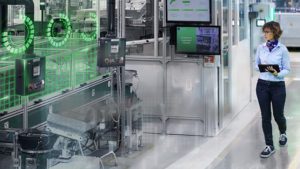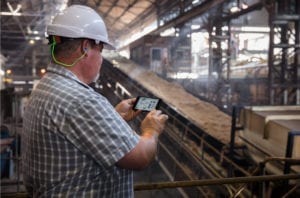For many organizations, like those in the mining, manufacturing, water waste water, and oil and gas industries, digital transformation is a challenge. However, because of the intensive levels of automation in these industries, most have assumed that a high degree of digitization has already occurred. They also assume that, they are in a strong position to leverage business transformation. In fact, the opposite is true.

According to recent Bain & Company research, only 8% of global companies who invest in digital technology have been able to achieve their targeted business outcomes. Couchbase, working in enterprise-class, multi-cloud to edge NoSQL databases, goes further to assert that 9 out of 10 organizations will fail to achieve expected digital transformation-driven financial gains.
Why is this happening when so many vendors, analysts, and experts consistently describe the impact of digital transformation on business growth in positive, glowing terms? Contrary to what many believe, digital transformation represents a great deal more than just technology. It’s about the people who wish to break new ground, create new value for customers, and accrue the promised benefits. It’s also about leveraging technologies, processes and people to establish a new corporate mindset.
What could such a new mindset possibly look like?
Understanding “physical world” and “digital world” distinctions
As a consultant, when I engage in meetings with customers, the conversation quickly turns to questions like “What will you deliver?” and “How and when can you deliver the service? This leads to an inward-looking and siloed approach to a perceived solution – a perfect opportunity to automate and optimize the existing environment. Most of the time, attention is focused on an asset or the physical world. This focus also manifests itself in other ways such as business initiatives that emphasize continuous improvement efforts, or teams that are staffed with people who already feel comfortable and experienced with the challenge they’ve been assigned.
Until this point in time, the physical world approach has served most of us well. Some manage to stay in business and achieve growth. However, a side effect of this approach is the division of the business into silos. Unfortunately, silos place severe limits on an organization’s ability to both grow and practice accelerated creativity.
Another physical world observation is that most businesses are dependent upon the processes they have in place and rely on the people who manage them. This means that external societal and marketplace changes can limit their internal agility. An outside change agent, such as an heightened focus on sustainability, could mean that only companies who have succeeded in decoupling the people, processes and systems from their physical assets have the tools in place to adapt and change fast.
This leads us to the introduction of the digital world where, if the connection to customers is properly designed and implemented, an exceptional customer experience can be achieved. In the digital world, timescales are measured in seconds and not hours, days or weeks. When a customer submits an inquiry, responses are swift and those responses may consist of multiple options.
Free of institutional restrictions, this new digital world makes it possible for businesses to be more creative and holistic. Those who partake in this digital world should ask the question “why?”. It must be a world that is based on knowledge as opposed to raw data. This is where competitive advantage is established. Whereas the physical world assumes a linear line of thinking based on process optimization, the digital world enables an organization to create an exceptional experience for their customer’s customer through experimentation.
Both worlds are important, and a company does not have to select one over another. To be successful a company has to strive to be a world leader in both. But to achieve such a forward-thinking balance, principles like Industry 4.0 need to be applied to the optimization of physical world assets and linear-based silos. On the digital world side, advanced connection to customers and more dynamic behaviors allow businesses to reimagine their value chains, which can now be easily scalable and where unique knowledge and expertise creates a competitive advantage.
How a simple sensor created digital transformation for a tire company
To better understand this concept, consider a major manufacturer of automobile and truck tires. This tire manufacturer decided to downplay the traditional notion that tires are rubber objects that simply supply a vehicle manufacturer with one of the many parts they need to build a car. Instead, the tire company focused on the buyer of the car manufacturer’s automobiles (the customer’s customer). In their digital world positioning, they developed a company culture that’s all about the driving experience and the safety and comfort of that driver/passenger. In order to change the traditional “sell a good quality tire” paradigm, the company installed a pressure sensor in their tires. These sensors provide knowledge to their customer’s customer: like the vehicle fleet manager. For the tire manufacturer, their purpose has shifted from being simply a supplier of tires, like all of their competitors, to being a source of knowledge for fleet owners around the wear and tear, comfort, and safety of their vehicle’s tires.
The digital transformation creates a cycle of success. As the tire company continuously amasses more and more tire performance data, new innovations in the current generation of tires are measured for success. This knowledge then quickly feeds into the development process of the next generation of tires, and this continuous improvement loop builds a greater and greater competitive advantage over time, one that no other brand possesses.
In another digital world example, farmers in New Zealand are using Industry 4.0 principles that have been productized from a company that was originally a provider of steel to successfully irrigate their lands. By providing the farmers with the insights and advice they need to make the proper water distribution decisions, farmers are saving up to 50% in water usage.
The digital world is not about experience, it’s about experiments and transformational leaders
Organizations need to build a strategy that guarantees they won’t be left behind while others step forward. But engineering such a shift, from the physical word (a good rubber tire) to the digital world (a tire that provides a service) also requires new thinking. This is where people provide the key.
In some cases, challenges will need to be analyzed through a unique lens and a different mindset. If corporate decision-makers continue asking the same “what” and “how” questions, no different outcomes can be expected. Instead, the end result will not be business transformation, but simply optimization of business silos. Those who are serious about transformation, will need to ask the question “why?”. This will create discomfort while requiring an emphasis on creativity, reorganization and new partnering.
A first step for manufacturing organizations hoping to implement true digital transformation is to put a diverse team of people in place led by a transformational leader. This team should not be made up only of traditional players such as senior engineers, but should involve individuals from sales, finance, and human resources organizations. The team should be diverse in age and gender. People are more creative when traditional constraints are lifted.
When identifying a transformational leader, don’t just look to someone with experience, but instead to someone who wants to experiment. For industrial firms, the transformational leader could be an individual from the commercial side of the company, or someone who is new to the company. An individual with executive level talent and a natural thirst and curiosity for innovation.
To learn more about how your company can embark on a journey that bridges the physical and digital world, please contact me.
CNN Indonesia published a Digital Transformation article co-authored by Rik and Farid Belbouab, CEO of shipping company Meratus. Read the English version here.



